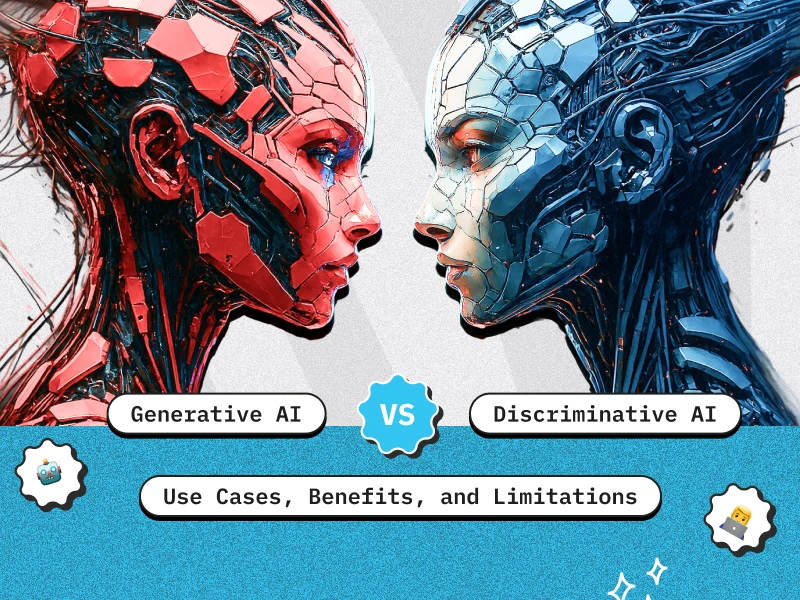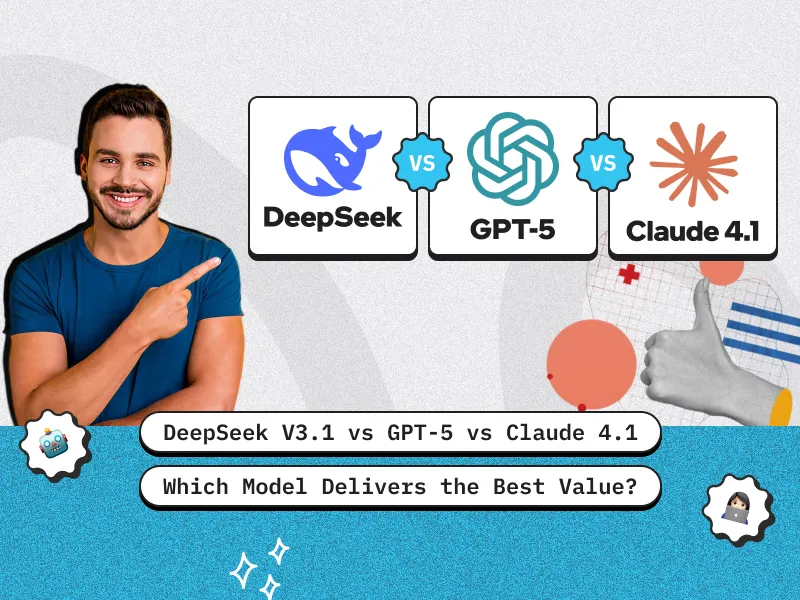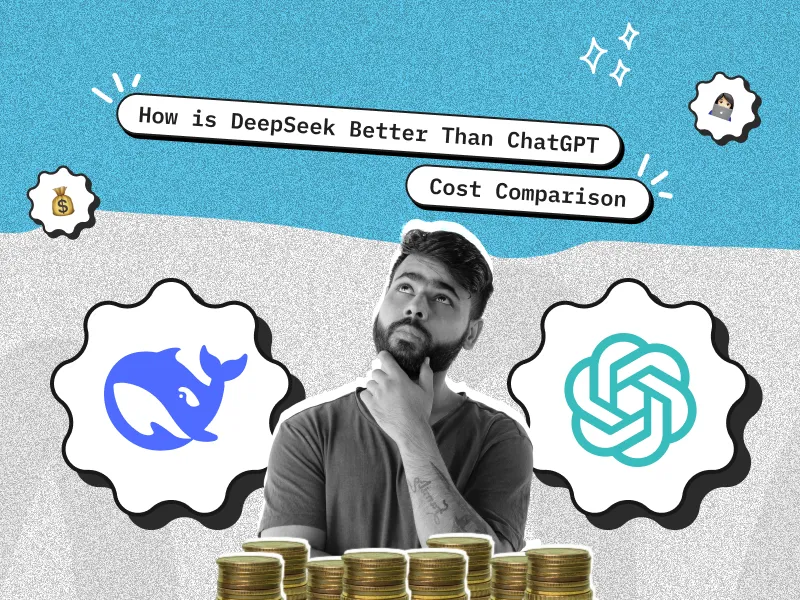TL;DR
- Generative AI creates new, realistic data (e.g., text, images) by modeling the underlying distribution, making it ideal for content creation, design, and data augmentation in 2026.
- Discriminative AI classifies or predicts labels for existing data, excelling at tasks like fraud detection, customer segmentation, and diagnostics where accuracy and explainability are essential.
- Key difference: Generative models generate data, while discriminative models distinguish between classes.
- Use generative AI when you need creative outputs, synthetic data, or simulation; use discriminative AI for reliable classification and prediction.
- 2026 trend: Many businesses will combine both approaches to maximize value, balancing creativity with control and accuracy.
Introduction
Artificial Intelligence is no longer a niche technology—it’s now central to modern business strategy, product development, and customer experience in 2026. Among the many AI concepts gaining traction, one critical comparison stands out: Generative AI vs Discriminative AI—Which One Should You Use? While these two approaches are often mentioned side by side, they serve fundamentally different purposes, solve different problems, and require distinct development strategies. Choosing the wrong one can lead to inefficiencies, increased costs, or missed innovation opportunities.
Whether you’re a tech leader evaluating your AI roadmap or a Generative AI Development Company helping clients implement smart solutions, it’s essential to understand the differences between these AI models. In this guide, we’ll break down generative AI vs discriminative AI, explore how each works, where they excel, and how to choose the right approach for your business in 2026.
What is Generative AI?
Generative AI refers to models designed to learn the underlying distribution of data so they can generate new, realistic data samples. These models don’t just recognize patterns—they create entirely new outputs that resemble the data they were trained on.
Generative AI has become the buzzword of the decade thanks to the rise of Large Language Models (LLMs), image generators, music composers, and even video synthesizers. Tools like GPT-4, DALL-E, MidJourney, and Sora have brought generative capabilities into the mainstream.
Key Features of Generative AI:
- Learns to model P(data) — the distribution of the data itself.
- Capable of generating new, never-seen-before samples.
- Useful for creating text, images, audio, video, synthetic data, and more.
Examples in 2026:
- Automated marketing copy with brand tone.
- AI-powered design tools for rapid prototyping.
- Video generation for ads and training materials.
- Music generation for content creators.
- Data augmentation for rare-class training scenarios.
Quick Explore: Top Generative AI Tools in 2026
What is Discriminative AI?
In contrast, discriminative AI models are designed to learn the boundaries between different classes of data. They don’t generate new samples; instead, they classify existing data or predict a label for new input.
If you think of AI as answering questions, generative AI says, “Here’s something new that looks like your data,” while discriminative AI says, “This example belongs to class A or class B.”
Discriminative AI has long been the workhorse of enterprise AI, powering everything from fraud detection to customer segmentation.
Key Features of Discriminative AI:
- Learns P(label|data) — the probability of a label given data.
- Optimized for prediction and classification.
- Often simpler and faster to train than generative models.
Examples in 2026:
- Sentiment analysis for social media monitoring.
- Spam detection for email systems.
- Credit scoring for lenders.
- Anomaly detection in industrial IoT.
- Customer churn prediction for SaaS companies.
Also Read: How to Build a Generative AI Solution: Step-by-Step Guide
Generative AI vs Discriminative AI: The Core Difference
At the mathematical level, generative AI vs discriminative AI can be described like this:
- Generative models learn the joint probability distribution P(X, Y), enabling them to generate data and model how features and labels co-occur.
- Discriminative models learn the conditional probability P(Y|X), focusing only on distinguishing classes given the input.
But for business and engineering teams in 2026, this boils down to a simpler question: Do you want your AI to generate new data or classify existing data?
Side-by-Side Comparison Table
| Feature | Generative AI | Discriminative AI |
| Goal | Model data distribution to generate new samples | Predict class labels or probabilities |
| Output | New, synthetic data | Classifications, predictions |
| Examples | GPT-4, DALL-E, Stable Diffusion | Logistic Regression, Random Forest, XGBoost |
| Use Cases | Content creation, simulation, design | Fraud detection, sentiment analysis, diagnostics |
| Complexity | Often more computationally intensive | Typically simpler, faster to train |
| Data Needs | Large, diverse datasets for creativity | Labeled, balanced data for accurate classification |
This comparison is central to understanding generative AI vs discriminative AI. Both are powerful, but their applications and requirements differ dramatically.
How Generative AI Is Transforming Industries in 2026
The rise of generative AI is one of the defining technology trends of this decade. In 2026, it’s not just about flashy text or images—it’s reshaping entire workflows and business models.
Key Use Cases:
- Marketing and Advertising: Automated content generation tailored to audience segments.
- Product Design: AI-assisted prototyping and ideation.
- Healthcare: Simulating new drug molecules.
- Entertainment: Script, video, and music generation.
- Synthetic Data: Creating realistic but private data for model training.
Companies are adopting generative AI to reduce costs, speed up creative cycles, and unlock new revenue streams.
But generative AI isn’t always the right choice. Despite its promise, it comes with challenges in computational resources, bias control, content moderation, and explainability.
When considering generative AI vs discriminative AI, these trade-offs are critical.
Quick Read: 10 Tips For Implementing Generative AI In Your Organization
How Discriminative AI Remains Essential in 2026
While generative AI is getting the spotlight, discriminative AI remains the backbone of many mission-critical systems.
Key Use Cases:
- Finance: Credit scoring, fraud detection, anti-money-laundering.
- Retail: Customer segmentation, demand forecasting.
- Manufacturing: Defect detection on assembly lines.
- Healthcare: Diagnosing diseases from medical images.
- Cybersecurity: Intrusion detection, phishing classification.
Discriminative models often require fewer computational resources and are easier to interpret and audit. This makes them indispensable in regulated industries where explainability is mandatory.
For many business problems, generative AI vs discriminative AI isn’t a competition—discriminative models are simply the right tool.
Hybrid Approaches: The Best of Both Worlds
An emerging trend in 2026 is the combination of generative and discriminative AI. Rather than choosing one over the other, many advanced AI systems use both in a pipeline.
Example hybrid strategies:
- Data Augmentation: Use generative models to create synthetic training data to improve discriminative model accuracy.
- Adversarial Training: Generative Adversarial Networks (GANs) where a generative model creates data while a discriminative model evaluates it.
- Content Moderation: Generative models suggest content while discriminative models classify it as safe or unsafe.
This hybrid approach solves a key problem: balancing creativity with control. For companies asking which one should you use in 2026, the answer may often be: both.
Choosing Between Generative AI and Discriminative AI in 2026
If you’re deciding between generative AI vs discriminative AI for your 2026 roadmap, here’s how to think about it:
Choose Generative AI When:
- You need to create new content or assets.
- You want to simulate scenarios or design variations.
- Your business relies on creative outputs (marketing, design, media).
- You want to augment limited real-world data.
Questions to ask:
- Can we benefit from synthetic data?
- Will creating content or designs reduce costs?
- Can we differentiate through personalization?
Choose Discriminative AI When:
- You need to classify, predict, or detect with high accuracy.
- Your problem has clear labels or categories.
- Explainability and compliance are important.
- You want simpler, faster-to-train models with less compute.
Questions to ask:
- Do we need reliable, auditable predictions?
- Are errors costly or dangerous?
- Is our data labeled and ready for classification?
Consider Both When:
- You want to generate data and evaluate it.
- You’re tackling complex, multi-step workflows.
- You need to improve model training with synthetic examples.
- You want a flexible AI strategy that adapts to changing needs.
Future Trends for Generative AI vs Discriminative AI in 2026
AI isn’t static. In 2026, we’re seeing rapid evolution in both generative and discriminative approaches:
- More hybrid models: Unified architectures that can both generate and discriminate.
- Improved safety and explainability: Addressing generative AI’s “black box” risks.
- Domain-specific solutions: Tailored AI models for finance, healthcare, legal, and more.
- Low-code/No-code AI tools: Democratizing access so even non-engineers can deploy models.
- Regulatory frameworks: Governing how generative AI is used, especially around deepfakes and misinformation.
Businesses that understand generative AI vs discriminative AI will be better positioned to navigate these changes strategically.
Conclusion
Generative AI vs Discriminative AI isn’t just an academic debate—it’s a practical decision that can shape the success of your AI strategy in 2026. Generative AI excels at creation, simulation, and data augmentation, powering industries from marketing to healthcare. Discriminative AI shines in classification, prediction, and detection, forming the backbone of finance, security, and manufacturing systems.
The smartest organizations will not only choose the right approach but also integrate both in ways that drive innovation and deliver real ROI. By leveraging Generative AI Development Services, businesses can unlock new creative possibilities while maintaining robust, reliable predictive systems. As AI adoption accelerates, knowing which one you should use in 2026 isn’t optional—it’s essential for staying ahead of the competition.
FAQ’s
What is the main difference between generative and discriminative AI?
Generative AI models create new data samples similar to training data, while discriminative AI models classify existing data into categories.
Is GPT-4 generative or discriminative?
GPT-4 is a generative AI model that produces human-like text.
Can generative and discriminative AI work together?
Yes—many systems use generative AI for data augmentation or content generation while using discriminative AI for evaluation and classification.
Which is better for business in 2026?
It depends on your needs. Generative AI is better for creative tasks, while discriminative AI is ideal for prediction, classification, and compliance-critical use cases.
How will generative AI vs discriminative AI evolve in 2026?
Expect more hybrid models, better safety measures, and industry-specific solutions that combine both approaches.











 30 mins free Consulting
30 mins free Consulting 
 11 min read
11 min read 







 Love we get from the world
Love we get from the world 